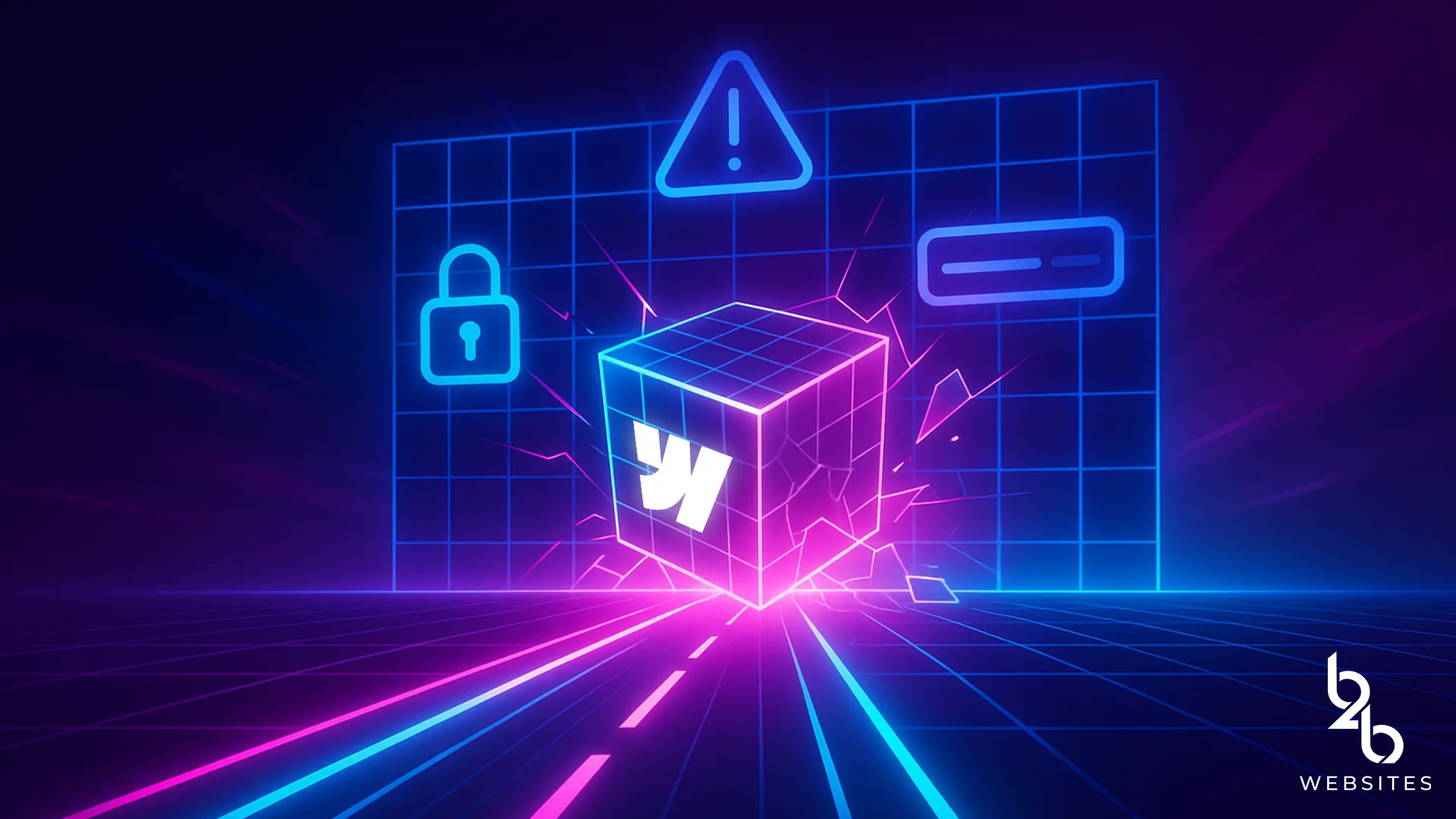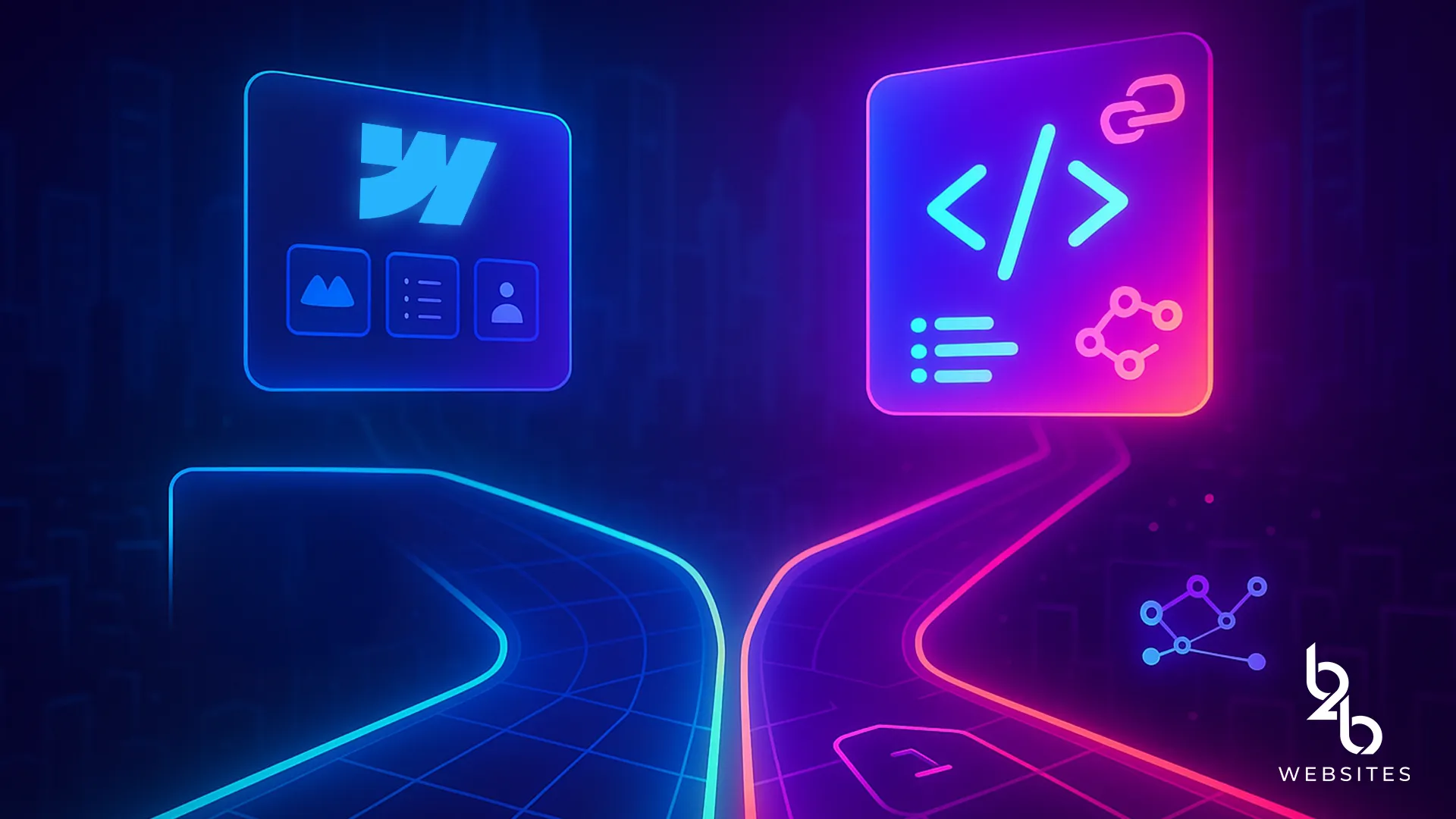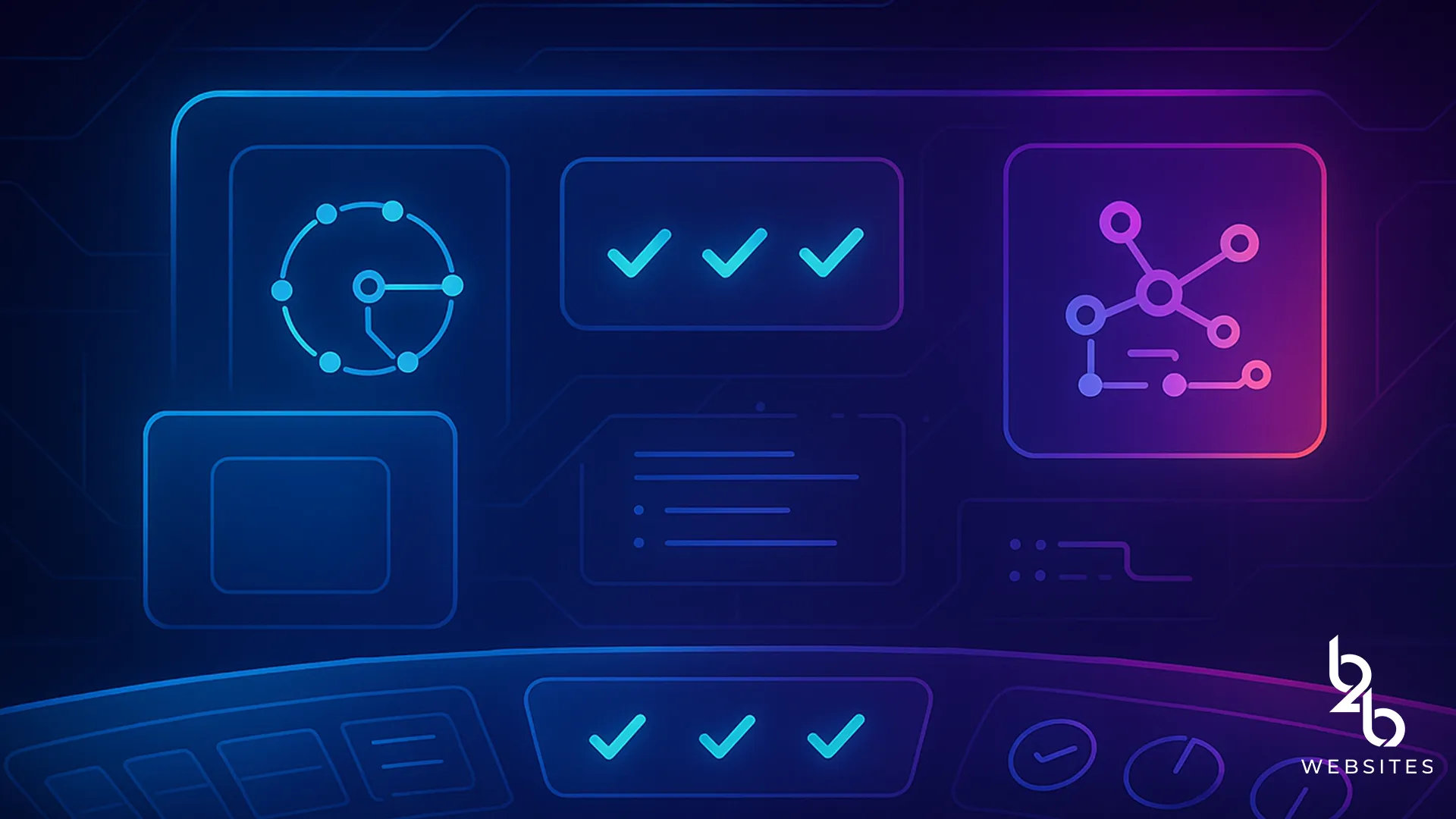
How to Know if My Australian Webflow Site Needs Custom Code

Figuring out if your Australian Webflow site needs custom code isn’t always straightforward. Webflow is powerful, especially for those looking to build professional websites without coding, but sometimes, what’s built-in just isn’t enough. Whether you're trying to improve speed, integrate tools, or offer unique features, there are moments when native Webflow tools hit a ceiling. That’s where custom code steps in.
So how do you know when you’ve reached that point?
Let’s break it down, clearly and simply, so you can decide whether working with a Webflow developer in Australia makes sense for your business.
Webflow Is Great, But It Has Limits
Webflow’s visual builder makes designing a modern site far more accessible. You get access to a sleek CMS, responsive layout tools, and built-in animations, all with little to no coding knowledge required. For many Australian businesses, that’s more than enough to get started.
But when you want to add functionality that Webflow wasn’t specifically designed to handle, such as syncing real-time data from a third-party CRM or building a fully custom product configurator, those limitations start to show.
That’s when the question becomes clear: do you need custom code to make your site do exactly what you want?
The Role of Custom Code in Webflow
Think of custom code as your website’s “superpower booster.” It adds functionality Webflow can’t provide out of the box. That might include dynamic interactions, data integrations, real-time automation, or enhanced user experience flows.
Let’s say you want an interactive tool that allows customers to input preferences and see personalised results. Webflow can design the form and layout, but making it work dynamically? That’s a job for JavaScript.
Or maybe your site looks great on desktop but behaves oddly on certain mobile devices. A few lines of CSS can fix layout issues that the visual builder can’t address. Suddenly, your site’s usability improves dramatically.
Custom code isn’t just about making your website “look cool.” It’s about giving users a better experience and aligning your site with business needs, whether that’s better conversions, faster speed, or more useful integrations.
To see how these enhancements come together inside real projects, check out our guide on Webflow custom code integration.

When Should You Consider Custom Code?
It’s easy to stick with Webflow’s native tools, but there comes a point when limitations get in the way.
So how do you know if your Webflow site needs custom code? Look out for these signs:
- Are your users hitting roadblocks on the site?
- Do you want features that Webflow templates can’t offer?
- Are you integrating complex tools like HubSpot, Stripe, or custom analytics?
- Does your current site feel “close but not quite there”?
These are signs it may be time to talk to a professional. A Webflow developer in Australia can assess whether your goals truly require custom coding, or if there's a simpler workaround using Webflow’s native features.
The Benefits of Custom Webflow Development
What are the benefits of adding custom code to a Webflow site? Here’s what you can gain:
- Speed.
Developers can write clean, efficient code that optimises page load times. That’s not just a win for user experience, it also supports your SEO efforts, particularly with Google’s Core Web Vitals. - Functionality.
Custom features like advanced filtering, interactive calendars, calculators, or membership systems often require custom code. These aren’t “nice to haves.” For many businesses, they’re essential to how the site supports daily operations. - Flexibility.
Say you want a branded animation that tells your story or transitions that reflect your brand’s tone. Built-in animations in Webflow are solid but limited. Custom scripts let you craft exactly the effect you want. - Integration.
If you use tools that collect data, trigger automations or sync across systems, clean API connections built with custom code will streamline your backend without slowing down your front end.
But There Are Trade-Offs
While custom code can enhance your Webflow site, it’s important to understand the challenges that can come with it.
What are the potential downsides of using custom code in Webflow? Here’s what to consider:
- Increased complexity:
Adding code introduces a layer of complexity. It takes more time than using Webflow’s drag-and-drop tools, and custom features often require ongoing maintenance, especially after platform updates or when scaling. - Higher upfront cost:
Template-based sites can launch quickly, often within days. Custom-coded sites take longer to build, sometimes weeks, and come with a higher initial investment. However, this often pays off for businesses that need performance and scalability. - The value of local expertise:
Working with a Webflow developer in Brisbane or elsewhere in Australia ensures you're collaborating with someone who understands local business needs. They offer clear communication, cultural alignment, and responsive support.
Planning the Right Way
Before you dive into development, pause and plan. Map out your goals. Understand your user journeys. Identify where native tools fall short. Then, bring in a developer for a feasibility check.
A good Webflow developer in Australia won’t just say, “Sure, we can code that.” They’ll ask why. They’ll help refine your ideas, offer alternative solutions, and ensure whatever’s built integrates cleanly with your overall digital strategy.
Real Examples: What Custom Code Can Solve
- Advanced Search Filters: If you run a large content site or product catalogue, users need ways to find what they want fast. Native CMS filtering in Webflow is limited. Custom code enables multi-criteria filters with clean results.
- Custom Booking Forms: Want people to book consultations with availability syncing to Google Calendar? Custom code can pull real-time availability, validate inputs, and send confirmations.
- Live Data Integration: If your content comes from external databases or APIs, such as live stock updates or currency rates, code can pull this in automatically. This keeps your site fresh and useful without manual updates. For a closer look at how this works in practice, see our guide on using backend services with Webflow.
- Progressive Web App Features: Want offline mode, push notifications, or app-like experiences? These can’t be done with Webflow alone.
In short, if you can describe it but can’t build it with Webflow’s native features, it’s time to consider code.

Working with the Right Developer
Choosing to use custom code is only part of the equation. Who you work with can make all the difference. The right developer will not only build what you need, but also help shape the solution to fit your business.
What should you look for in a Webflow developer when custom code is involved? Start with these qualities:
- Has a portfolio of advanced Webflow projects
- Offers ongoing support after launch
- Understands local hosting, SEO, and user behaviour
- Can communicate clearly throughout the process
You don’t want a one-off coder. You want a partner who will strengthen your site as your business grows. To see what that looks like in practice, explore our Webflow development services and how we support custom builds for growing businesses.
Final Thoughts
Custom code turns a good Webflow site into a great one. It pushes past platform limits, solves unique business challenges, and creates a more engaging experience for your users. But it’s not for everyone.
If your goals are simple, or if your site is early-stage, it’s fine to keep things light. But once you want more control, better performance, or unique design features, it’s time to explore custom solutions.
And when you do, working with a Webflow developer in Australia, especially one experienced with local business needs, makes the process easier, smoother and far more effective. If you're looking for local expertise, our Chermside web development team is ready to support businesses across Queensland with tailored solutions. You can also browse more Webflow tips and guides to help you plan your next move.
FAQs: Do I Really Need Custom Code for My Australian Webflow Site?
What are the signs my Webflow site needs custom code?
If features feel limited—like basic forms, clunky animations, or tool integrations failing—it’s time to consider custom solutions.
Can custom code improve performance?
Yes. It can speed up load times, add lazy loading, and enhance how your site responds across devices. This is great for SEO and user experience.
When are built-in Webflow integrations enough?
They work for simple tasks. But when you need more control or real-time data syncing, custom code gives you flexibility.
How does custom code help with content management?
It allows dynamic updates, advanced filters, and real-time syncs with external data—beyond what Webflow’s CMS can do alone.
Can it make my site more responsive?
Absolutely. Custom CSS or scripts help your layout behave consistently across mobile, desktop, and different browsers.
Is there a security risk with custom code?
Not if handled by pros. Clean code, secure API handling, and regular audits keep your Webflow site safe.
Does it help with long-term scalability?
Yes. Custom coding ensures your site grows with your business without needing a rebuild every time you scale up.













%2520-%2520Main%2520Image.jpeg)




